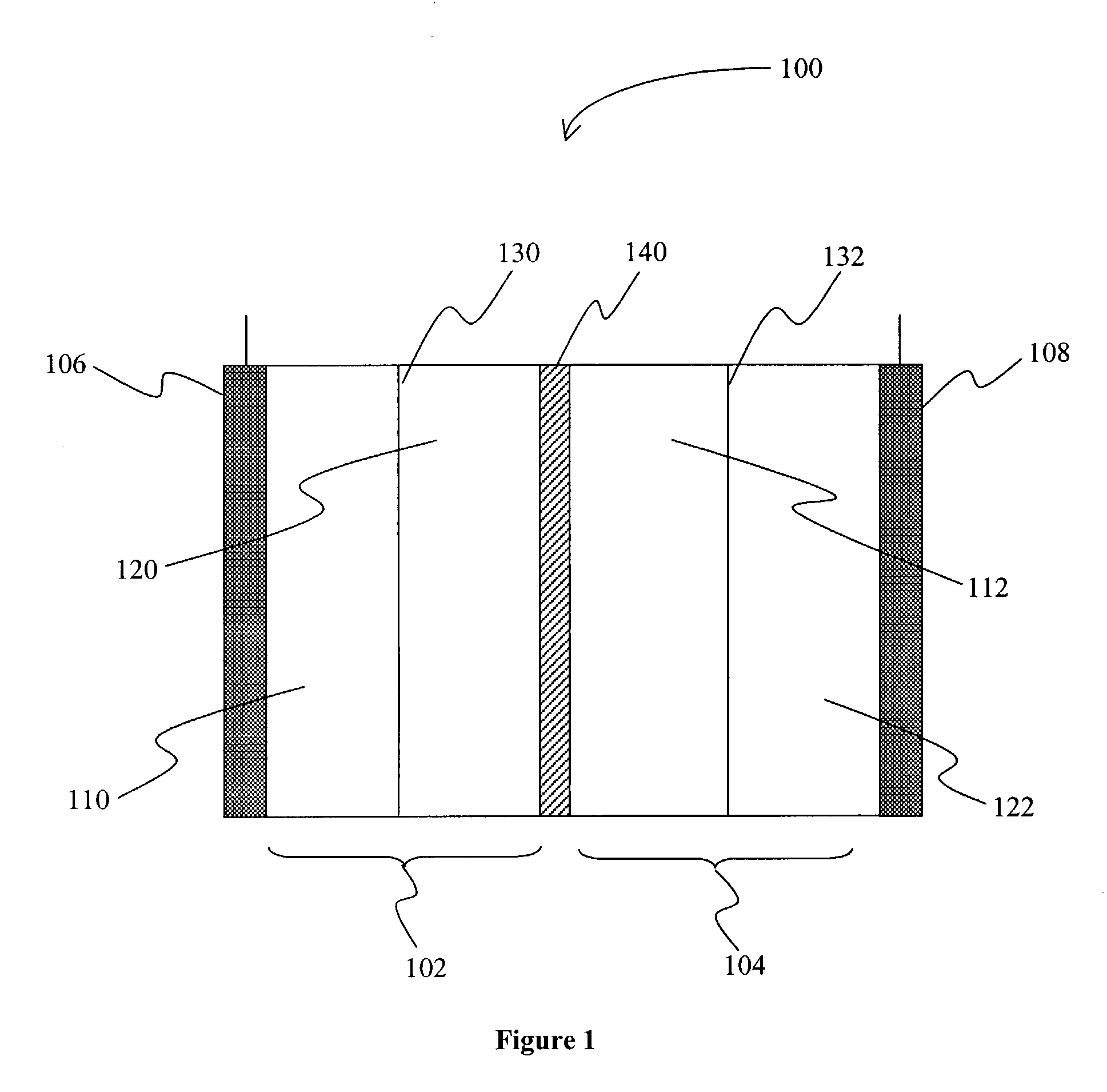Electric devices with improved bipolar electrode
a bipolar electrode, electric device technology, applied in the direction of indirect fuel cells, non-aqueous electrolyte cells, flat cells grouping, etc., can solve the problems of relatively common oxidation problems of membranes, and relatively poor ratio of weight or volume to capacity, and achieves the effect of reducing the number of electrodes
- Summary
- Abstract
- Description
- Claims
- Application Information
AI Technical Summary
Benefits of technology
Problems solved by technology
Method used
Image
Examples
Embodiment Construction
[0014]The inventors have discovered that an electric device, and especially a secondary battery may be produced in which a first metal (e.g., zinc) and a second metal (e.g., cerium) form a redox pair in an acidic electrolyte (e.g., methane sulfonic acid or nitric acid), and in which a corrosion resistant bipolar electrode separates a cathode compartment from an anode compartment. Particularly preferred corrosion resistant bipolar electrodes include those in which at least part of the bipolar electrode comprises glassy carbon or other material in which carbon has no long-range order in three dimensions, or EBONEX™ (substoichiometric oxides of titanium having the formula of TinO2n−1 where n is an integer of 4 or more; for example, commercially available from Atraverda, Mansfield, UK), which may or may not be further modified (e.g., platinized, or niobium-doped).
[0015]As used herein, the term “redox pair” is interchangeably used with the term “redox couple” and refers to a combination ...
PUM
| Property | Measurement | Unit |
|---|---|---|
| open circuit voltage | aaaaa | aaaaa |
| open circuit voltage | aaaaa | aaaaa |
| thick | aaaaa | aaaaa |
Abstract
Description
Claims
Application Information
 Login to View More
Login to View More - R&D
- Intellectual Property
- Life Sciences
- Materials
- Tech Scout
- Unparalleled Data Quality
- Higher Quality Content
- 60% Fewer Hallucinations
Browse by: Latest US Patents, China's latest patents, Technical Efficacy Thesaurus, Application Domain, Technology Topic, Popular Technical Reports.
© 2025 PatSnap. All rights reserved.Legal|Privacy policy|Modern Slavery Act Transparency Statement|Sitemap|About US| Contact US: help@patsnap.com


